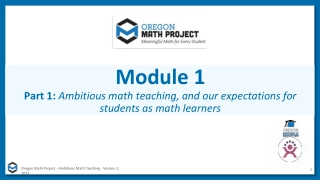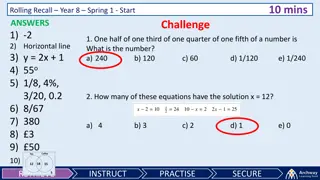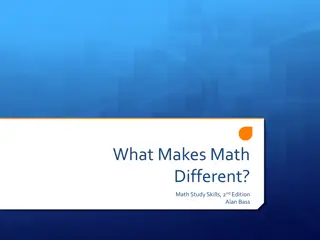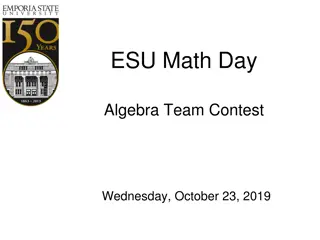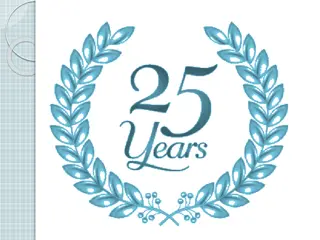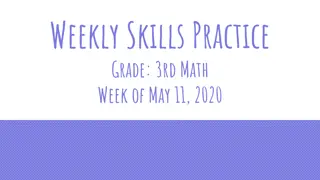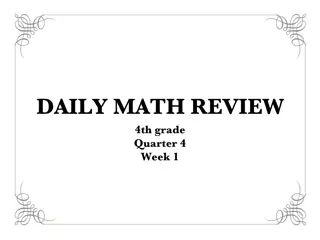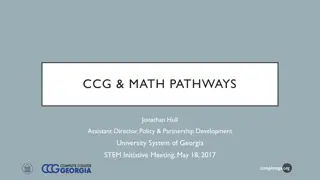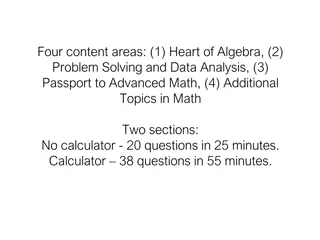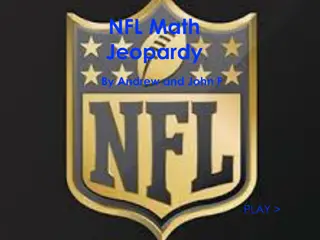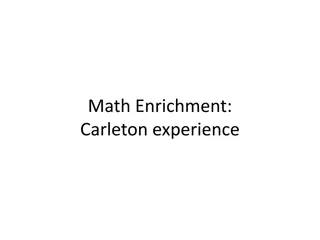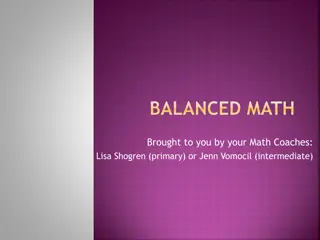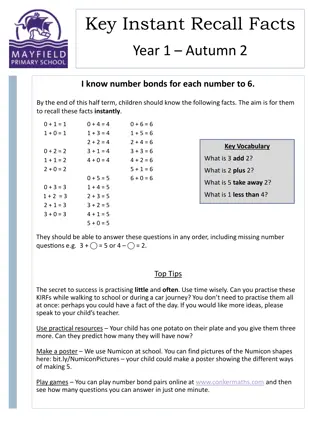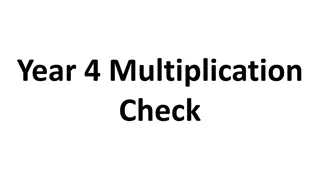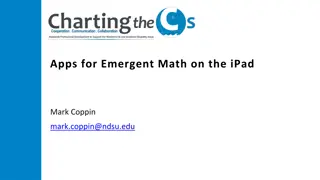Enhancing Math Skills: Instant Recall Facts for Year 4 Students
Improve math skills with key instant recall facts for Year 4 students, focusing on number bonds to 100, multiplication and division facts for the 6 times table, as well as the 9 and 11 times tables. Practice regularly, use games, songs, and chants, and explore helpful strategies to master these fundamental math concepts effortlessly.
Download Presentation

Please find below an Image/Link to download the presentation.
The content on the website is provided AS IS for your information and personal use only. It may not be sold, licensed, or shared on other websites without obtaining consent from the author. Download presentation by click this link. If you encounter any issues during the download, it is possible that the publisher has removed the file from their server.
E N D
Presentation Transcript
Mayfield Primary School Key Instant Recall Facts Year 4 Autumn 1 I know number bonds to 100. By the end of this half term, children should know the following facts. The aim is for them to recall these facts instantly. Some examples: Key Vocabulary 60 + 40 = 100 40 + 60 = 100 100 40 = 60 100 60 = 40 37 + 63 = 100 63 + 37 = 100 100 63 = 37 100 37 = 63 What do I add to 65 to make 100? What is 100 take away 6? What is 13 less than 100? 75 + 25 = 100 25 + 75 = 100 100 25 = 75 100 75 = 25 48 + 52 = 100 52 + 48 = 100 100 52 = 48 100 48 = 52 How many more than 98 is 100? What is the difference between 89 and 100? This list includes some examples of facts that children should know. They should be able to answer questions including missing number questions e.g. 49 + = 100 or 100 = 72. Top Tips The secret to success is practising little and often. Use time wisely. Can you practise these KIRFs while walking to school or during a car journey? You don t need to practise them all at once: perhaps you could have a fact of the day. If you would like more ideas, please speak to your child s teacher. Buy one get three free - If your child knows one fact (e.g. 8 + 5 = 13), can they tell you the other three facts in the same fact family? Use number bonds to 10 - How can number bonds to 10 help you work out number bonds to 100? Play games There are missing number questions at www.conkermaths.com . See how many questions you can answer in just 90 seconds. There is also a number bond pair game to play.
Mayfield Primary School Key Instant Recall Facts Year 4 Autumn 2 I know the multiplication and division facts for the 6 times table. By the end of this half term, children should know the following facts. The aim is for them to recall these facts instantly. 6 1 = 6 6 2 = 12 6 3 = 18 6 4 = 24 6 5 = 30 6 6 = 36 6 7 = 42 6 8 = 48 6 9 = 54 6 10 = 60 6 11 = 66 6 12 = 72 1 6 = 6 2 6 = 12 3 6 = 18 4 6 = 24 5 6 = 30 6 6 = 36 7 6 = 42 8 6 = 48 9 6 = 54 10 6 = 60 11 6 = 66 12 6 = 72 6 6 = 1 12 6 = 2 18 6 = 3 24 6 = 4 30 6 = 5 36 6 = 6 42 6 = 7 48 6 = 8 54 6 = 9 60 6 = 10 66 6 = 11 72 6 = 12 6 1 = 6 12 2 = 6 18 3 = 6 24 4 = 6 30 5 = 6 36 6 = 6 42 7 = 6 48 8 = 6 54 9 = 6 60 10 = 6 66 11 = 6 72 12 = 6 Key Vocabulary What is 8 multiplied by 6? What is 6 times 8? What is 24 divided by 6? They should be able to answer these questions in any order, including missing number questions e.g. 6 = 72 or 6 = 7. Top Tips The secret to success is practising little and often. Use time wisely. Can you practise these KIRFs while walking to school or during a car journey? You don t need to practise them all at once: perhaps you could have a fact family of the day. If you would like more ideas, please speak to your child s teacher. Songs and Chants You can buy Times Tables CDs or find multiplication songs and chants online. If your child creates their own song, this can make the times tables even more memorable. Double your threes Multiplying a number by 6 is the same as multiplying by 3 and then doubling the answer. 7 3 = 21 and double 21 is 42, so 7 6 = 42. Buy one get three free If your child knows one fact (e.g. 3 6 = 18), can they tell you the other three facts in the same fact family? Warning! When creating fact families, children sometimes get confused by the order of the numbers in the division number sentence. It is tempting to say that the biggest number goes first, but it is more helpful to say that the answer to the multiplication goes first, as this will help your child more in later years when they study fractions, decimals and algebra. E.g. 6 12 = 72. The answer to the multiplication is 72, so 72 6 = 12 and 72 12 = 6
Mayfield Primary School Key Instant Recall Facts Year 4 Spring 1 I know the multiplication and division facts for the 9 and 11 times tables. By the end of this half term, children should know the following facts. The aim is for them to recall these facts instantly. 9 1 = 9 9 2 = 18 9 3 = 27 9 4 = 36 9 5 = 45 9 6 = 54 9 7 = 63 9 8 = 72 9 9 = 81 9 10 = 90 9 11 = 99 9 12 = 108 9 9 = 1 18 9 = 2 27 9 = 3 36 9 = 4 45 9 = 5 54 9 = 6 63 9 = 7 72 9 = 8 81 9 = 9 90 9 = 10 99 9 = 11 108 9 = 12 11 1 = 11 11 2 = 22 11 3 = 33 11 4 = 44 11 5 = 55 11 6 = 66 11 7 = 77 11 8 = 88 11 9 = 99 11 10 = 110 11 11 = 121 11 12 = 132 11 11 = 1 22 11 = 2 33 11 = 3 44 11 = 4 55 11 = 5 66 11 = 6 77 11 = 7 88 11 = 8 99 11 = 9 110 11 = 10 121 11 = 11 132 11 = 12 Key Vocabulary What is 8 multiplied by 6? What is 6 times 8? What is 24 divided by 6? They should be able to answer these questions in any order, including missing number questions e.g. 9 = 54 or 9 = 11. Top Tips The secret to success is practising little and often. Use time wisely. Can you practise these KIRFs while walking to school or during a car journey? You don t need to practise them all at once: perhaps you could have a fact family of the day. If you would like more ideas, please speak to your child s teacher. Look for patterns These times tables are full of patterns for your child to find. How many can they spot? Use your ten times table Multiply a number by 10 and subtract the original number (e.g. 7 10 7 = 70 7 = 63). What do you notice? What happens if you add your original number instead? (e.g. 7 10 + 7 = 70 + 7 = 77) What do you already know? Your child will already know many of these facts from the 2, 3, 4, 5, 6, 8 and 10 times tables. It might be worth practising these again!
Mayfield Primary School Key Instant Recall Facts Year 4 Spring 2 I can recognise decimal equivalents of fractions. By the end of this half term, children should know the following facts. The aim is for them to recall these facts instantly. 1 2= 0.5 1 4= 0.25 3 4= 0.75 1 10= 0.1 2 10= 0.2 5 10= 0.5 6 10= 0.6 9 10= 0.9 1 100= 0.01 7 100= 0.07 21 100= 0.21 75 100= 0.75 99 100= 0.99 Key Vocabulary How many tenths is 0.8? How many hundredths is 0.12? Write 0.75 as a fraction? Write as a decimal? Children should be able to convert between decimals and fractions for , , and any number of tenths and hundredths. Top Tips The secret to success is practising little and often. Use time wisely. Can you practise these KIRFs while walking to school or during a car journey? You don t need to practise them all at once: start with tenths before moving on to hundredths. If you would like more ideas, please speak to your child s teacher. Play games - Make some cards with pairs of equivalent fractions and decimals. Use these to play the memory game or snap. Or make your own dominoes with fractions on one side and decimals on the other.
Mayfield Primary School Key Instant Recall Facts Year 4 Summer 1 I know the multiplication and division facts for the 7 times table. By the end of this half term, children should know the following facts. The aim is for them to recall these facts instantly. 7 1 = 7 7 2 = 14 7 3 = 21 7 4 = 28 7 5 = 35 7 6 = 42 7 7 = 49 7 8 = 56 7 9 = 63 7 10 = 70 7 11 = 77 7 12 = 84 1 7 = 7 2 7 = 14 3 7 = 21 4 7 = 28 5 7 = 35 6 7 = 42 7 7 = 49 8 7 = 56 9 7 = 63 10 7 = 70 11 7 = 77 12 7 = 84 7 7 = 1 14 7 = 2 21 7 = 3 28 7 = 4 35 7 = 5 42 7 = 6 49 7 = 7 56 7 = 8 63 7 = 9 70 7 = 10 77 7 = 11 84 7 = 12 7 1 = 7 14 2 = 7 21 3 = 7 28 4 = 7 35 5 = 7 42 6 = 7 49 7 = 7 56 8 = 7 63 9 = 7 70 10 = 7 77 11 = 7 84 12 =7 Key Vocabulary What is 7 multiplied by 6? What is 7 times 8? What is 84 divided by 7? They should be able to answer these questions in any order, including missing number questions e.g. 7 = 28 or 6 = 7. Top Tips The secret to success is practising little and often. Use time wisely. Can you practise these KIRFs while walking to school or during a car journey? You don t need to practise them all at once: perhaps you could have a fact family of the day. If you would like more ideas, please speak to your child s teacher. Songs and Chants You can buy Times Tables CDs or find multiplication songs and chants online. If your child creates their own song, this can make the times tables even more memorable. Order of difficulty Ask your child to order these facts from the easiest to the most challenging. Can they explain why some facts are easier to remember? Then focus on practising the most challenging facts. Use memory tricks For those hard-to-remember facts, www.multiplication.com has some strange picture stories to help children remember.
Mayfield Primary School Key Instant Recall Facts Year 4 Summer 2 I can multiply and divide single-digit numbers by 10 and 100. By the end of this half term, children should know the following facts. The aim is for them to recall these facts instantly. Key Vocabulary 7 10 = 70 10 7 = 70 70 7 = 10 70 10 = 7 30 10 = 300 10 30 = 300 300 30 = 10 300 10 = 30 0.8 10 = 8 10 0.8 = 8 8 0.8 = 10 8 10 = 0.8 What is 5 multiplied by 10? What is 10 times 0.9? What is 700 divided by 70? 6 100 = 600 100 6 = 600 600 6 = 100 600 100 = 6 40 100 = 4000 100 40 = 4000 4000 40 = 100 4000 100 = 40 0.2 10 = 2 10 0.2 = 2 2 0.2 = 10 2 10 = 0.2 hundreds, tens, units tenths, hundredths These are just examples of the facts for this term. Children should be able to answer these questions in any order, including missing number questions e.g. 10 = 5 or 10 = 60. Top Tips The secret to success is practising little and often. Use time wisely. Can you practise these KIRFs while walking to school or during a car journey? You don t need to practise them all at once: perhaps you could have a fact family of the day. If you would like more ideas, please speak to your child s teacher.
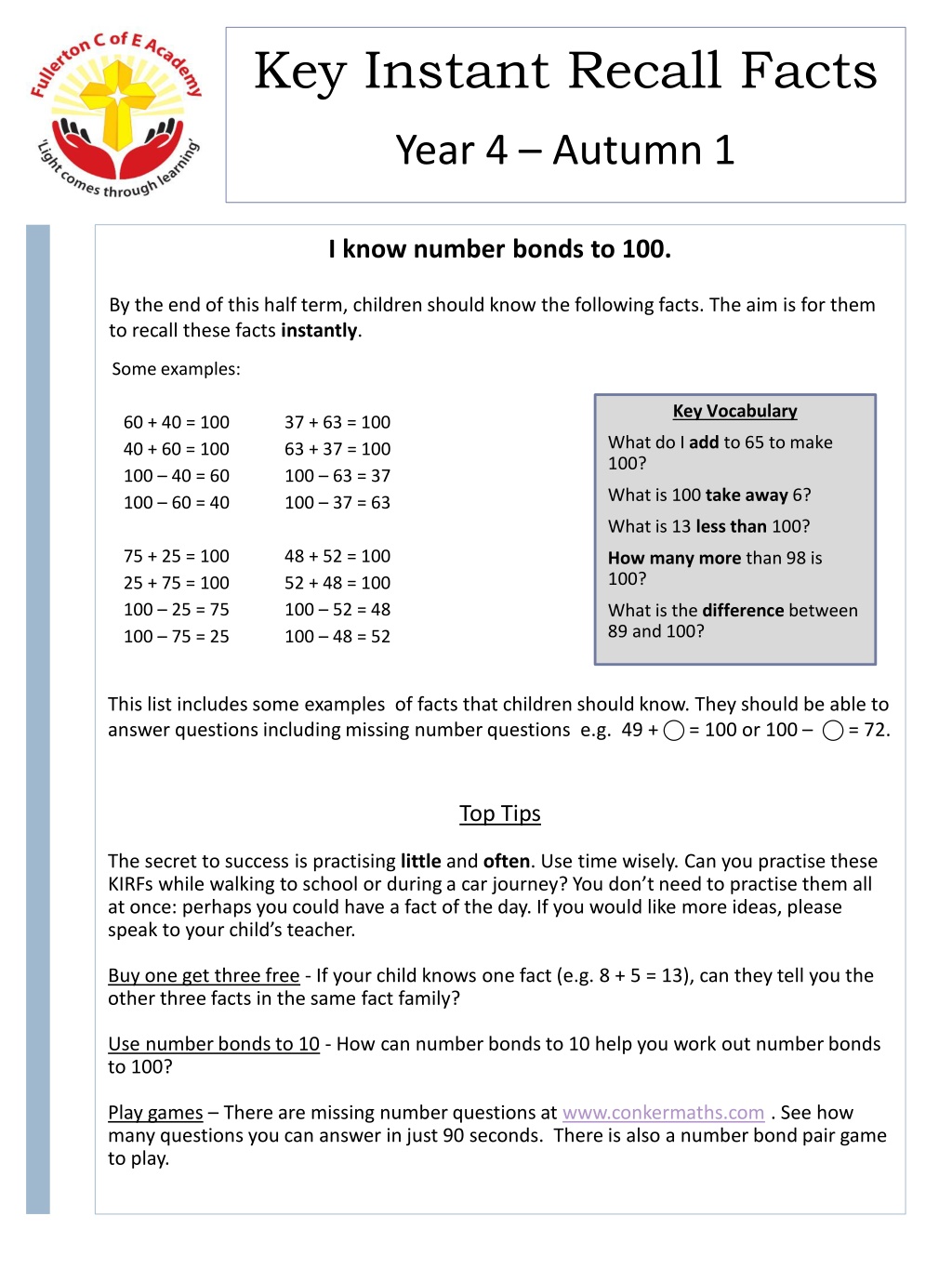
 undefined
undefined


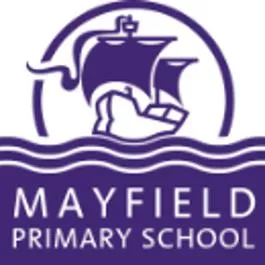





 undefined
undefined



